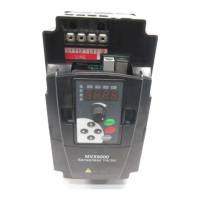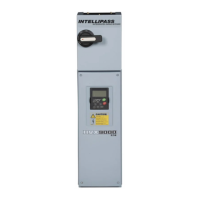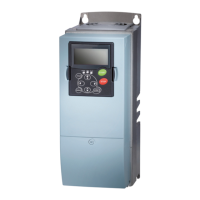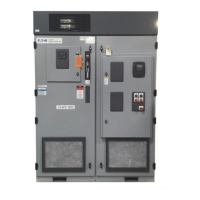04/10 MN04020001Z-EN
EMC installation
35
EMC installation
The responsibility to comply with the legally stipulated limit values
and thus the provision of electromagnetic compatibility is the
responsibility of the end user or system operator. This operator
must also take measures to minimize or remove emission in the
environment concerned (see figure 11). He must also utilize means
to increase the interference immunity of the devices of the system.
In a drive system (PDS) with frequency inverters, you should take
measures for electromagnetic compatibility (EMC) while doing
your planning, since changes or improvements to the installation
site, which are required in the installation or while mounting, are
normally associated with additional higher costs as well.
The technology and system of a frequency inverter cause the flow
of high frequency leakage current during operation. All grounding
measures must therefore be implemented with low impedance
connections over a large surface area.
With leakage currents greater than 3.5 mA, in accordance with
VDE 0160 or EN 60335, either
• the protective conductor must have a cross-section
f 10 mm
2
,
• the protective conductor must be open-circuit monitored, or
• the second protective conductor must be fitted.
For an EMC-compliant installation, we recommend the following
measures:
• Installation of the frequency inverter in a metallic, electrically
conducting enclosure with a good connection to earth,
• shielded motor cables (short cable lengths).
Ground all conductive components and housings in a drive system
using as short a line as possible with the greatest possible cross-
section (Cu-braid).
EMC measures in the control panel
For the EMC-compatible installation, connect all metallic parts of
the device and the switching cabinet together over broad surfaces
and so that high-frequencies will be conducted. Mounting plates
and cabinet doors should make good contact and be connected
with short HF-braided cables. Avoid using painted surfaces
(Anodized, chromized). An overview of all EMC measures is
provided in figure 26 on page 36.
X Install the frequency inverter as directly as possible (without
spacers) on a metal plate (mounting plate).
X Route mains and motor cables in the switch cabinet as close to
the ground potential as possible. This is because free moving
cables act as antennas.
X When laying HF cables (e.g. shielded motor cables) or
suppressed cables (e.g. mains supply cables, control circuit and
signal cables) in parallel, a minimum clearance of 300 mm
should be ensured in order to prevent the radiation of
electromagnetic energy. Separate cable routing should also be
ensured when large voltage potential differences are involved.
Any necessary crossed cabling between the control signal and
power cables should always be implemented at right angles
(90 degrees).
X Never lay control or signal cables in the same duct as power
cables. Analog signal cables (measured, reference and
correction values) must be shielded.
Earthing
The ground connection (PE) in the cabinet should be connected
from the mains supply to a central earth point (mounting plate).
All protective conductors should be routed in star formation from
this earth point and all conductive components of the PDS
(frequency inverter, motor reactor, motor filter, main choke) are to
be connected.
Avoid ground loops when installing multiple frequency inverters in
one cabinet. Make sure that all metallic devices that are to be
grounded have a broad area connection with the mounting plate.
Screen earth kit
Cables that are not shielded work like antennas (sending,
receiving). Make sure that any cables that may carry disruptive
signals (e.g. motor cables) and sensitive cables (analog signal and
measurement values) are shielded apart from one another with
EMC-compatible connections.
The effectiveness of the cable shield depends on a good shield
connection and a low shield impedance.
Use only shields with tinned or nickel-plated copper braiding.
Braided steel shields are unsuitable.
h
Control and signal lines (analog, digital) should always be
grounded on one end, in the immediate vicinity of the
supply voltage source (PES).

